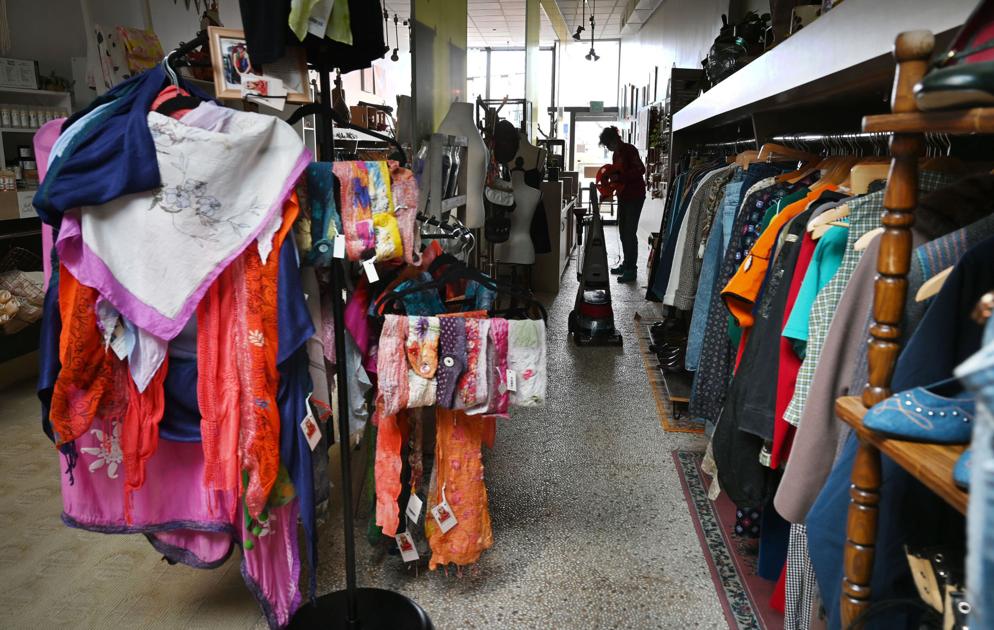As Colorado’s economy gradually reopens this week during the COVID-19 pandemic, decision-makers should proceed with a failsafe doctrine: society cannot save every life and should not attempt to do so.
Lifting of the stay-at-home order, and reopening select businesses, will result in the loss of life. It will also save lives. No one knows which is more deadly: the virus or the highly destructive economic policies imposed in efforts to control it.
Poverty is the world’s biggest killer. It causes everything from hunger and malnutrition to depression, anxiety, substance abuse and suicide.
Consider a new peer-reviewed study published in the Journal of the American Medical Association’s journal Psychiatry.
“Since the COVID-19 crisis, businesses have faced adversity and laying off employees,” the study explains. “Schools have been closed for indeterminable periods, forcing some parents and guardians to take time off work… research suggests that sustained economic stress could be associated with higher U.S. suicide rates in the future.”
Not only in the future but now.
Federal data released last week show the national suicide rate at its highest level in 30 years, with the government citing “economic distress” and “social isolation” as the leading causes.
The U.S. loses about 50,000 people each year to suicide, and we can expect that number to soar as a result of the coronavirus shutdowns. Combine that with the other deadly factors caused by unemployment and poverty and the cure could easily kill more than the disease.
Anyone who doubts the lethality of social isolation and unemployment need only consider the trend in people calling the federal government’s Disaster Distress Helpline. In March, the hotline received an 891% increase in distress calls over March 2019.
The Psychiatry journal describes a perfect storm that should culminate in a suicide crisis beyond our worst nightmares. A few key factors aligning as a result of the shutdowns include:
• Economic stress: “Economic downturns are usually associated with higher suicide rates compared with periods of relative prosperity.”
• Social isolation: “Suicidal thoughts and behaviors are associated with social isolation and loneliness. Therefore, from a suicide prevention perspective, it is concerning that the most critical public health strategy for the COVID-19 crisis is social distancing.
• Decreased access to community and religious support: “Weekly attendance at religious services has been associated with a fivefold lower suicide rate compared with those who do not attend.” Most houses of worship are closed.
Local and state officials throughout the country see up close the suffering of their constituents.
That is why commissioners in Colorado’s Weld County might allow all businesses to reopen this week in what they call the “safer at work” plan.
In a conversation with The Gazette’s editorial board Saturday, Gov. Jared Polis said he will work with local or county governments that want to develop COVID-19 reopening plans crafted for unique geographic and demographic circumstances.
One-size solutions never suit the best interests of all communities. Besides, the state’s closure orders have been notoriously random and unfair, allowing pot shops to operate while cigar stores must close. The virus sees no distinction between cigar smokers and marijuana users.
“It is completely unfair to pick winners and losers,” said Weld County Commissioner Mike Freeman, speaking to KFKA radio.
“We’ve been picking winners and losers in this state for the last six weeks … He’s (Polis) still picking winners and losers of who can open and who can’t, and what we’re saying is, we’re going to treat everybody equally and fairly in Weld County.”
To understand how communities and regions contend with diverse pandemic circumstances, consider that five states had no lockdown orders or business closures. Each is better off than Colorado, by far.
Colorado’s COVID-19 death rate was 8.4 for each 100,000 as of last week. By contrast, nonclosure-state death rates are 2.0 in Nebraska; 2.6 in Iowa; 1.4 in Arkansas; 0.9 in South Dakota; and 1.7 in North Dakota. Partial-closure states report similar outcomes, with COVID-19 death rates of 1.0 in Wyoming; 4.1 in Oklahoma; and 1.0 in Utah.
Sweden left the responsibility of social distancing and other protective measures to individuals, allowing businesses and K-12 schools to remain open. The infection rate never overwhelmed the country’s hospitals.
Sweden has the 10th highest COVID-19 death rate among developed countries, but Swedish health officials claim the approach has created herd immunity that will pay off in the event of another outbreak. They believe strict lockdown orders in other states will only delay the inevitable.
“Mental health and other issues — perhaps not a priority elsewhere — are generally just a bigger part of the health strategy here,” explains a report by ABC News. The approach “speaks to a culture which values well-being in its broadest form.”
All human endeavors involve risks, including the chance of becoming gravely ill. Society cannot and should not try to save every life by eliminating risks with draconian measures. The unintended consequences are too dangerous and deadly. For the sake of life, let’s get back to work.
The Gazette Editorial Board
This content was originally published here.

